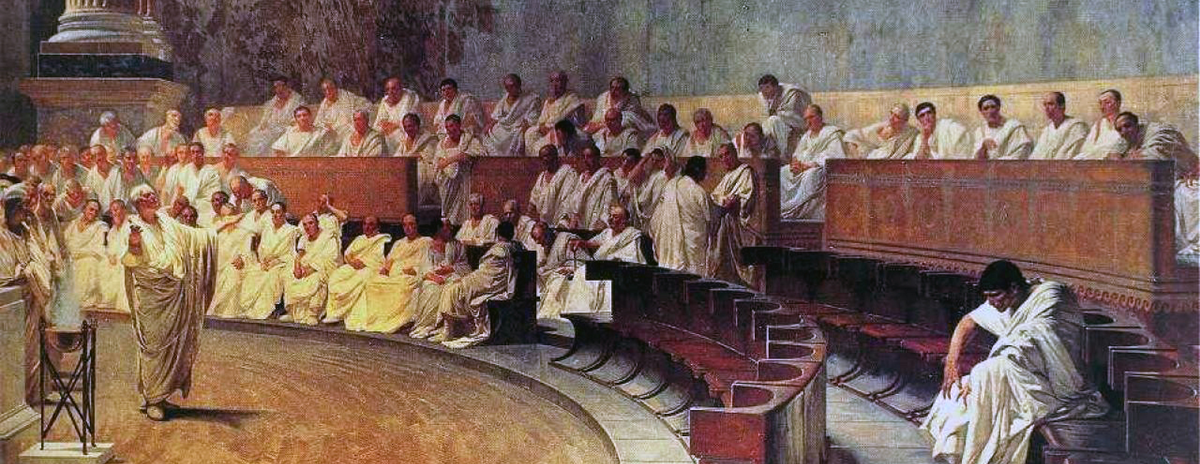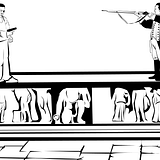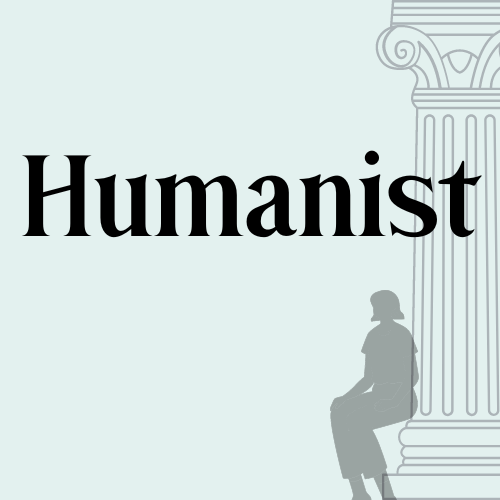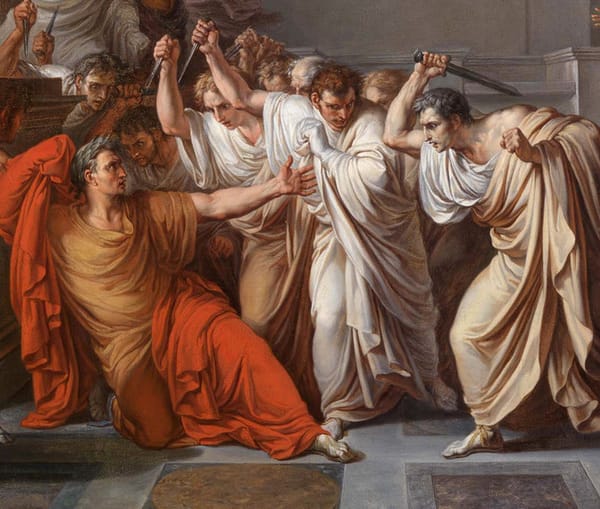Alexander Hamilton’s Catiline Obsession
Before Lin-Manuel Miranda’s Broadway show Hamilton turned the “Ten Dollar Founding Father” into everyone’s new favorite historical…

Before Lin-Manuel Miranda’s Broadway show Hamilton turned the “Ten Dollar Founding Father” into everyone’s new favorite historical character, Alexander Hamilton was perceived very differently. Instead of Miranda’s scrappy immigrant and manic genius, he was thought of as a quasi-authoritarian promoter of big government and oligarchy by a commercial elite. He was, after all, the founder of Wall Street and author of most of the Federalist Papers, which advocated for a centralized government with a vigorous single executive.
When it came to defending his (often extreme) views against anti-federalist and democratic voices like Thomas Jefferson’s, Hamilton turned to the classics: anyone who disagreed with him, he claimed, was Catiline reborn.
In 63 BCE, frustrated after losing two campaigns for the consulship in a row, Lucius Sergius Catilina (a.k.a. Catiline) conspired to overthrow the government of the Roman republic. Our surviving accounts of his conspiracy and revolt generally paint him as a villain, a predator who wooed debtors, ne’er-do-wells, libertines, and malcontents of all stripes and recruited them to his treasonous cause. As consul, the famous orator Cicero uncovered the conspiracy and berated Catiline so harshly in the senate that Catiline fled the city.
The four speeches Cicero later published, “Against Catiline” (In Catilinam I-IV), are a major source of evidence for these events. But the historian Sallust, in his later account of the conspiracy, includes a surprisingly rational and compelling speech by Catiline about the injustices perpetrated by the Roman elite and the need for a popular uprising. Catiline’s uprising got as far as it did because he tapped into (apparently) very real political grievances and used rhetoric to persuade people that he had the solution. (For more, see Barbara Levick’s recent biography of Catiline.)
To Hamilton, Catiline represented the all-too-familiar character of an alleged populist who promised people freedom and a better life — but who used that rhetoric cynically to serve his own ambition, even at the risk of toppling an already fragile political system.
Hamilton wasn’t alone among the founding fathers in drawing inspiration from this episode in Roman history. John Adams was always urging his sons to read their Sallust for moral edification and literary style, and in 1813, Jefferson told his friend William Duane that he had given up reading about current events and turned instead to Roman history:
… if they also furnished their Tarquins, their Catilines & Caligulas, their stories are handed to us under the brand of a Livy, a Sallust and a Tacitus, and we are comforted with the reflection that the condemnation of all succeeding generations has confirmed the censures of the historian, and consigned their memories to everlasting infamy, a solace we cannot have with the Georges & Napoleons, but by anticipation.
In other words, this too shall pass, and history will be the judge — hopefully a just and vindictive one. Even villains like Catiline were defeated by the likes of Cicero, or at least punished by historians like Sallust. The founding fathers often used classical historical figures just as we use the founding fathers today: as an exalted source of inspiration, viewed nostalgically as better people from a better time, who were equal to the challenges they faced, at least in the long run. But Hamilton didn’t have the educational background of an Adams or a Jefferson, having begun his training in liberal arts when he immigrated to America in his mid-teens. His classical references — and there are plenty of them — may be all the more pointed because he felt that he had so much catching up to do.

In 1792, a few years into George Washington’s first term, Hamilton (Washington’s Secretary of the Treasury) and Jefferson (Secretary of State) renewed an old feud. Hamilton became convinced that Jefferson was sponsoring and actively inciting the National Gazette to trash the Washington administration and Hamilton’s plans regarding the national debt. Hamilton wrote three essays for The Gazette of the United States under the pen-name “An American,” in which he made accusations to that effect. He was soon met by a furious response from one “Aristides,” who vigorously denied that “Mr. Jefferson is the patron and promoter of national disunion, national insignificance, public disorder and discredit … as the Cataline [sic] of the day, or as the ambitious incendiary, who would light a torch to the ruin of his country” (4 September 1792).
Hamilton never let an attack go unanswered. He took up his pen again, this time under the name “Catullus” — meaning, apparently, “Catulus,” one of two prominent consular statesmen in the late Republic who opposed popularis reforms. At the end of the second Catullus letter, he took aim at “Aristides”’ pen name:
Say Aristides! did the Character, to whom you are so partial, imitate, in this case, the sublime virtue of that venerable Athenian, whose name you have assumed? Did he dissuade his countrymen from adopting a proposition, because though “nothing could be more advantageous nothing was more unjust” (19 September 1792)?
Two could play the classical reference game. In the next Catullus letter, he escalated in sensational fashion, in defense of law and order against what he saw as sedition. The anti-federalists, he declared, included:
… the never to be satiated lovers of innovation and change — the tribe of pretended philosophers, but real fabricators of chimeras and paradoxes — the Catalines [sic] and the Cæsars of the community (a description of men to be found in every republic) who leading the dance to the tune of liberty without law, endeavor to intoxicate the people with delicious but poisonous draughts to render them the easier victims of their rapacious ambition … (29 September 1792).
It wasn’t just that the anti-federalists were trying to bring down the newborn republic before it even got started, though. Hamilton’s vivid warnings about “the dance to the tune of liberty without law” speaks to his anxiety about the democrats’ seductive rhetoric of freedom. Catiline, especially in the speech written for him by Sallust, embodied that same dangerous ability to lure people in with persuasive promises of a better life, in service of nefarious ulterior motives.
Two years later, Hamilton returned to these themes, when the anti-federalists used the Whiskey Rebellion in Pennsylvania as evidence of the tyrannical nature of the Washington regime and of Hamilton’s tax program. This time, the Catiline connection was more explicit: for his pen name, he chose “Tully,” and embodied Tullius Cicero as he wrote four more scathing editorials defending the rule of law.
It is by this, in a still greater degree, that caballers, intriguers, and demagogues are prevented from climbing on the shoulders of faction to the tempting seats of usurpation and tyranny. Were it not that it might require too lengthy a discussion, it would not be difficult to demonstrate, that a large and well organized Republic can scarcely lose its liberty from any other cause than that of anarchy, to which a contempt of the laws is the high road (“Tully” No. 3, 28 August 1794).
The promise of freedom, he argued, was tantamount to a call for anarchy, and, perhaps paradoxically, anarchy was a faster way to destroy a republic than a strong executive. Even an overly powerful government preserved people’s respect for the rule of law; anarchy would lead to the collapse of the system entirely, thereby paving the way for the rise of a tyrant. Having less freedom than you want is better for everyone than having more freedom than you should, according to Hamilton. In conclusion, he wrote scornfully, “to the plausible but hollow harangues of such conspirators, ye cannot fail to reply, How long, ye Catilines, will you abuse our patience?”
Finally, we can’t talk about Hamilton and Catiline without talking about Aaron Burr. Hamilton self-destructed politically when John Adams was elected president (Lin-Manuel Miranda cut Hamilton’s anti-Adams rap from the musical; see also “The Reynolds Pamphlet”). Hamilton’s exit, internal divisions, and unpopular decisions by their leader John Adams during his presidency cost the federalists the election of 1800.
With the federalist party so diminished, Jefferson and Burr remained as presidential candidates, and when the electoral votes were counted, the two were tied. The election was then referred to the House of Representatives. The federalists were contemplating supporting Burr as the lesser of two evils compared with the democrat-republican Jefferson, and Hamilton couldn’t take it: he started firing off letters to all of his former colleagues. He was no Jefferson admirer, but considered Burr “as true a Cataline [sic] as ever met in midnight conclave.” Four months later, he asserted that “every step in his career proves that he has formed himself upon the model of Catiline, and he is too coldblo[o]ded and too determined a conspirator ever to change his plan.” In another letter, Burr “is truly the Cataline [sic] of America,” and in yet another, Burr is one “who practices all the maxims of a Catiline, who, while despising, has played the whole game of, democracy.” Hamilton was convinced that Burr, once he’d taken office, was going to use the federalists to get elected and then abandon everything they stood for. Can we really make ourselves responsible, he asked, for electing a man “who on all hands is acknowledged to be a complete Cataline in his practice & principles?”
“A Catiline” was shorthand for everything he despised about Burr: his ambition and greed for power, his suave rhetoric, his selfishness:
As to Burr there is nothing in his favour. His private character is not defended by his most partial friends. He is bankrupt beyond redemption except by the plunder of his country. His public principles have no other spring or aim than his own aggrandisement per fas et nefas. If he can, he will certainly disturb our institutions to secure to himself permanent power and with it wealth (to Oliver Wolcott, Jr., 16 December 1800).
Burr lost the election in the house, perhaps thanks to Hamilton, and was later ousted from the vice presidency (which he held as the runner-up in the presidential election) by Jefferson. No small wonder, perhaps, that Burr challenged Hamilton to a duel and shot and killed him in 1804. Hamilton thought that Burr approached politics like a game, and detested him for it, but the game turned deadly serious in the end.
The final irony is that Burr proved Hamilton right, or at least took on a somewhat Catilinarian role: he masterminded a failed conspiracy to invade Texas and the Mississippi Valley, reportedly conspired with the British and with the Spanish to capture Washington, D.C. itself, and was arrested for treason in 1808.
Hamilton didn’t succeed in resolving the debate over the right amount of liberty in a democratic republic; no one has yet. But Hamilton’s ability to articulate and defend federalist principles against the proponents of “liberty” is exceptional, and admirable even today. The idea of a modern-day Catiline, feeding his or her own ambition by making empty promises and playing on our desire for freedom, is all too relevant to our political climate. Hamilton would tell us to resist our political temptations, and not to make ourselves easy prey. He had more faith in the system than most of us do — as well he should, since it was a system of his own design in many respects — but he gives us a counterpoint to the rhetoric we usually hear, the language to articulate what’s dangerous about promises of “freedom.”

Joanna Kenty is a post-doctoral fellow in the Department of Classics, Humanities, and Italian Studies at the University of New Hampshire.






